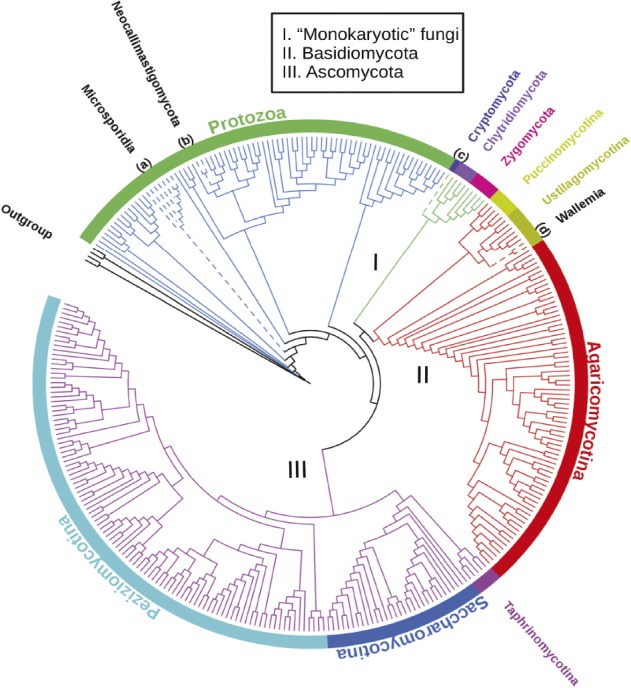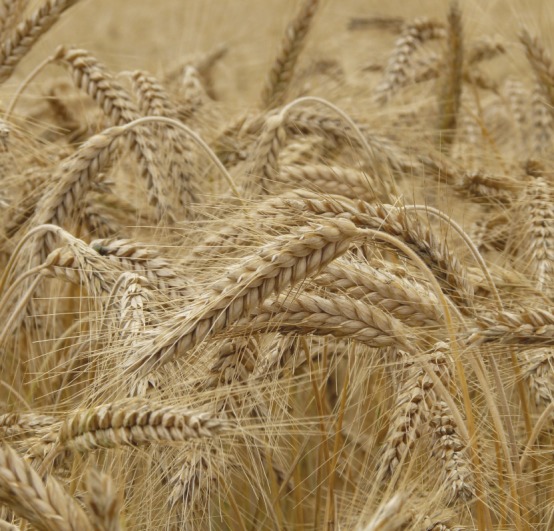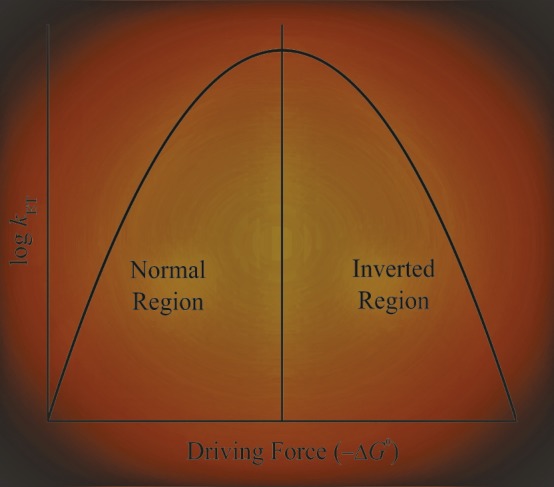Genome tree analysis suggests alternate fungal evolutionary histories

Genome tree of life for fungi.
Spanning every ecosystem, fungi comprise one of the largest and most diverse groups of organisms on Earth. Researchers have traditionally established kinship among fungi by scrutinizing a small set of highly conserved genes and constructing so-called gene trees. Noting that small numbers of genes may not adequately represent an entire species, JaeJin Choi and Sung-Hou Kim (pp. 9391–9396) estimated similarities and differences between organisms using “genome trees,” which are constructed from whole-proteome sequences. Tapping into the growing number of publicly available whole-genome sequences for fungi, the authors mapped fungal evolutionary histories using an adapted form of a computational algorithm that identifies textual overlap by quantifying similarities and differences between books. Next, the authors compared the approach, based on the history of all genes coding for the proteins of an organism, with previously published kinship inferred from gene trees. The genome tree analysis suggested that there are three major groups of earliest diverging fungi, in contrast to the four to eight groups suggested by the gene trees. According to the authors, the findings suggest alternate narratives for fungal evolution. — T.J.
Agricultural yields and rising temperatures

Wheat. Image courtesy of Pixabay/Hans.
Humans rely on wheat, rice, maize, and soybeans for two-thirds of their caloric intake. The effect of climate change on the yields of the four crops remains uncertain. Chuang Zhao et al. (pp. 9326–9331) assessed the impact of increasing temperatures on wheat, rice, maize, and soybean yields by performing a metaanalysis of more than 70 studies. The metaanalysis included studies that incorporated analytical methods such as process-based model simulations of yield response to temperature changes at the global and local scale, statistical regression models based on historical weather and yield data, and artificial field-warming experiments. All four methods suggest that increasing temperatures are likely to have a negative effect on the global yields for wheat, rice, and maize. Without carbon dioxide fertilization, farming adaptations, or genetic improvement, each degree Celsius increase in global mean temperature is estimated to reduce average global yields of wheat by 6.0%, rice by 3.2%, and maize by 7.4%. Estimates of soybean yields did not change significantly. The estimated effect of rising temperatures on yield varied greatly across crops and geographical areas, with yields increasing for some crops at some locations. According to the authors, the analyses provide insights into the development of crop-specific and region-specific adaptation strategies for ensuring global food security. — L.C.
Electron transfer and photosynthetic conversion efficiency

Marcus curve showing normal and inverted regions.
Fundamental to photosynthesis, light excites electrons in photoreceptive molecules, inducing them to cross a biological membrane. In photosynthetic plants, large multiprotein complexes, known as photosystem (PS) I and II, use chlorophyll donor species to effect cross-membrane electron transfer (ET) with high quantum efficiency. Hiroki Makita and Gary Hastings (pp. 9267–9272) demonstrate that in PSI the efficiency of such conversion arises from unproductive charge recombination in the so-called “inverted region.” A theory posits that the near-unity quantum yield in PSI reflects a virtually complete suppression of wasteful recombination reactions in the inverted region, where ET rates decrease with increasing driving force in a counterintuitive fashion. Focusing on PSI in a species of the freshwater cyanobacterium Synechocystis, the authors used computational modeling and in situ experiments to reveal that unproductive charge recombination outside the inverted region reduces photosynthetic quantum efficiency from 98% to less than 72%. According to the authors, the findings provide evidence that unproductive electron transfer recombination occurs in the inverted region under physiological conditions and undergirds high photosynthetic efficiency. — T.J.


